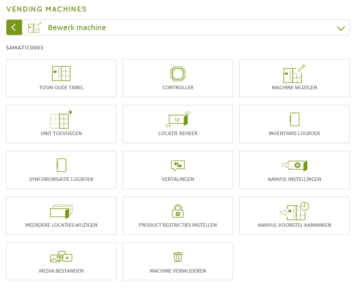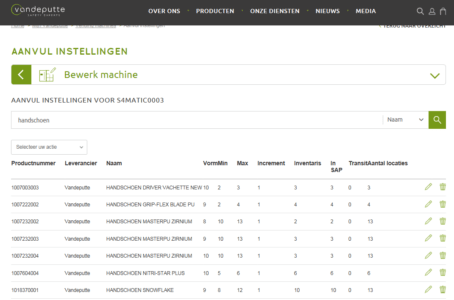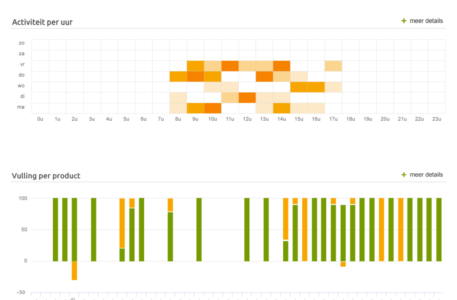
Do you regularly purchase personal protective equipment (PPE) for people in your company or team?
Then you know how time-consuming this can be.
Precious time you'd rather spend on other things. However, it’s important that you take the time to do this, as it's all about the safety and comfort of your employees.
There are four parties involved in purchasing safety products. First of all there is a safety advisor (1), who identifies the risks at the workplace and listens to the opinions of employees in the workplace (2).
Then there is the purchaser (3), whose job it is to find the right products and ensure that they reach the employees quickly. And finally, in many cases the CPBW (4) (Committee for Protection & Prevention at Work) must give its approval.
Manual administrative process
It's one thing to establish solid foundations regarding which PPE and any alternatives are required, but for many companies, the administrative process is still a manual one, and therefore not very efficient:
- The buyer or warehouse supervisor identifies a shortage.
- The buyer or warehouse supervisor communicates this information to place an order.
- The order is created manually.
- The supplier or distributor receives the order and enters it into their system.
- The supplier or distributor delivers the goods.
- The warehouse supervisor stores the goods in the warehouse.
- Employees are then given their safety products.
Some companies are already managing this process a little better. They might already skip steps 3 and 4 by using a system such as, for example, EDI (Electronic Data Interchange) or PunchOut.
But even then, you’re not entirely sure that your employees are continuously protected or have access to their safety equipment.
Fortunately, there is still room for improvement: here come vending machines into play.
What are vending machines?
Vending machines are installed at strategically located places in the workplace, so not in a warehouse for example (although that is an option).
They are available in various types. The two most popular are rotary type vending machines and locker type vending machines.
Rotary type vending machines have several compartments. You can use them for storing smaller PPE, such as gloves, glasses, and dust masks.

Then there are also locker type vending machines. These are intended mainly for larger products, such as helmets or harnesses.
Products can be collected from a locker type vending machine and you return them for maintenance or to charge a gas detector, for instance.

How to operate an automatic vending machine
The operation of our vending machines for example consists of 4 steps:
- Configuring the vending machine
- Replenishment of products either by your employees or by Vandeputte
- Employees accessing the products
- Management and optimization of consumption
#1 Configuration
Before the vending machine is ready to use for your employees, it is important that everything is configured according to your requirements.
Start by registering all users. If required, you can impose restrictions per user or user group.

With Vandeputte vending machines, you can limit access to products by their value, time, product group, or even by size or colour. For example, a particular employee is permitted to access their working trousers every 6 months. There is also an option to set a minimum or maximum per product.
To ensure that this process remains interactive, you can even add personalized safety instructions or manuals.
This is the most intensive part of the entire process since it requires some preparation.
#2 Aanvullen van producten
You can replenish products yourself or have this carried out by your supplier.
The system's user interface provides an overview of all products that need replenishing in Excel or PDF format. The screen displays compartments of products you need to replenish. It also shows the maximum quantity of a product that can be added. Next, you enter the exact quantity you actually want to add.

To avoid errors, you only have access to the compartments that need replenishing. If you want to change products, the vending machine dispenses the older products first, and only then the new ones.
#3 Accessing products from the vending machine
It is important that employees feel comfortable about using the vending machine on a daily basis. This requires an instinctive interface and reliable software. For example, accessing and returning products must be simple and intuitive.
As an example, Vandeputte's vending machines have a touch screen that can be operated using a personal badge, pin code, or even fingerprint. For even greater security, there is the option to set up a security question.

The screen options are in line with the restrictions that were defined during configuration.
Your employee then receives information about the safety product. If required, and to confirm that he or she is selecting the appropriate equipment for their specific work, a number of questions can be displayed on a screen.

What if a product is not immediately available?
Then, your employees will be able to see the reason why, allowing you to respond more quickly and efficiently.
#4 Managing consumption
The consumption of products can be tracked via the web application at www.vdp.com.
There, you'll find the following reports, among others:
- the general consumption per machine, per product group, or per cost centre
- the general consumption per user and/or user group
- the machine’s performance
- the average time for accessing the machine
- the machine's peak and off-peak times.

These reports will provide you with an overview of consumption. This allows you to optimize consumption and make efficient use of the machine.
Orders placed via other platforms, such as our website, EDI or email, can also be found on the dashboard. Transparency is key!
Why choose vending machines?
The use of vending machines saves a great deal of time and increases the efficiency and safety of your company.
Benefits to your employees
They don't have to walk to the central warehouse each time. They simply take out what they need from the machine at your workplace, 24 hours a day, 7 days a week.
Doubts about whether the appropriate equipment is being used are now a thing of the past. The machine only allows you to collect the correct equipment for you and your work!
Advantages for your safety department
The necessary PPE is always available in the workplace. There is a link between the correct equipment and the users and/or their work activities. It is even possible to display a video on the home screen, or to ask questions about certain products. This reduces the risk of errors.
It also makes it easier to monitor consumption per employee, maintenance, certification and inspection of materials.
Advantages for the purchasing department
Vending machines are available 24 hours a day, 7 days a week. They can be placed in different locations. This speeds up the internal distribution of safety products.
Another advantage is that all information is recorded. This gives you an overview of the consumption per product and per user at all times, as well as of the current stock at all locations.
Experience has taught us that vending machines result in considerable material savings.
Conclusion
Vending machines for personal protective equipment are absolutely worth considering if you want to automate and optimize your manual ordering process.
By installing machines at various strategic locations, your employees will rarely run out of safety equipment.
These distribution solutions are the result of very carefully considered design. You will see that the more you fine-tune them, the better you are able to estimate your PPE budget.
